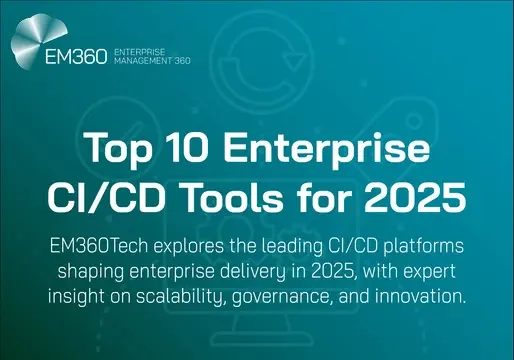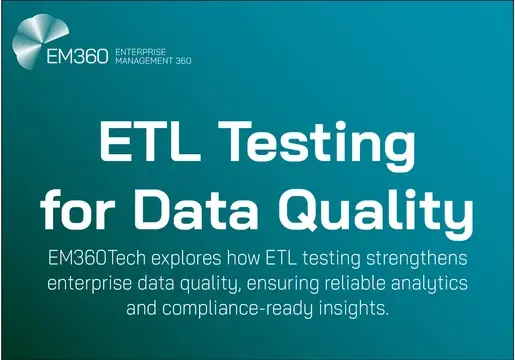Managing data correctly is all about predicting the future. That’s what analytics is all about; analyzing trends in data so businesses can make better and more informed decisions that improve business processes.
Of course, this is easier said than done. Even if data is managed flawlessly, making accurate predictions about business metrics can still be incredibly difficult and, more importantly, time-consuming.
No one is a data wizard, but there are tools out there that can give you the magic you need to turn data into actionable insights that improve your business.
One such tool is predictive analytics software, which helps data analysts of all kinds see what past data says about the future.
While these tools can't tell you what will happen exactly, they can tell you what huge amounts of data say is likely to happen. And the data never lies.

What is predictive analytics?
Predictive analytics is a branch of advanced analytics that uses historical data, statistical algorithms, and machine learning to predict future outcomes. It uses patterns in past and present data to forecast potential future events, trends, or behaviors.
This process involves collecting and analyzing large datasets to identify relationships and trends, which can then be used to make predictions about future events. The goal is to provide insights that can help organizations make informed decisions, optimize processes, and anticipate challenges before they occur.
The core of predictive analytics lies in its ability to provide actionable insights by converting raw data into meaningful predictions. This can be done by humans, but most organizations nowadays turn to predictive analytics software to do the job for them.
How does predictive analytics tools work?
Predictive analytics software collects and processes data from various sources – including databases, spreadsheets, and online sources – and analyzes patterns, trends, and relationships in the data.
The software then creates a predictive model by training machine learning algorithms on historical data. This model is a mathematical representation of the relationship between the input data and the predicted output. Once the model is built, it can be used to make predictions on new or unseen data.
Predictive analytics tools continuously update the predictive model over time by incorporating new data as it becomes available. This allows it to provide more accurate and dynamic predictions in the form of dashboards, reports, or visualizations, enabling decision-makers to understand future risks, trends, or opportunities, and take appropriate actions accordingly.
Features of predictive analytics software
Predictive analytics software offers a range of features designed to analyze data, build models, and generate forecasts. Some features offered by the industry’s best software include:
1. Data Integration
Predictive analytics software can integrate data from multiple sources, such as databases, APIs, spreadsheets, and cloud platforms. This feature allows the software to gather and merge diverse datasets to generate comprehensive insights.
2. Data Preprocessing and Cleaning
Before building predictive models, the software provides data cleaning and preprocessing tools. This includes handling missing values, correcting errors, eliminating duplicates, and transforming data formats to ensure the dataset is clean, accurate, and suitable for analysis.
3. Advanced Statistical and Machine Learning Algorithms
The core of predictive analytics lies in the algorithms it uses. These algorithms can include regression analysis, decision trees, clustering, neural networks, and other machine learning techniques. The software applies these algorithms to find patterns and relationships in the data and build predictive models.
4. Automated Model Building
Many predictive analytics platforms feature automated model-building capabilities. The software can automatically select, train, and test multiple models, choosing the best-performing one based on criteria like accuracy and efficiency, which reduces the time and expertise needed to develop models.
5. Predictive Modeling and Scoring
Once the data is processed, the software can create predictive models based on historical patterns. These models are used to score new data, helping predict future behaviors, trends, or risks. The scoring system ranks or categorizes outcomes based on the likelihood of specific events occurring.
Best predictive analytics software tools
Whether you are a data scientist, analyst, or business leader, choosing the best predictive analytics software for your business is crucial for making data-driven decisions that improve your business.
Here are ten of the best analytics tools and solutions that help you get the data-driven insights you need to make better business decisions.10. Altair RapidMiner
Altair RapidMiner is a powerful predictive analytics platform known for its user-friendly interface and incredible ML-powered solutions for making the most out of data. The platform comes with a suite of data preparation, machine learning, and model validation tools, enabling users to seamlessly ingest, clean, and analyze large datasets. Its no-code and low-code environment also makes it ideal for organizations looking to democratize AI and machine learning across various departments without requiring extensive programming knowledge. For more advanced users, it supports integration with popular data science languages like Python and R to offer flexibility. For those with less technical know-how, it offers a drag-and-drop workflow for building predictive models, making it accessible to both novice and experienced data scientists.
With Altair, users can connect unstructured and siloed data sources, modernize analytics applications while supporting legacy systems, and expedite team collaboration to produce meaningful, high-impact results quicker and easier than ever before. The platform can automatically suggest relevant algorithms, optimize models, and handle feature engineering, drastically reducing the time it takes to develop high-quality predictive models. This, combined with built-in data visualization and reporting tools, allows users to quickly interpret and act on insights to make better business decisions.








Comments ( 0 )